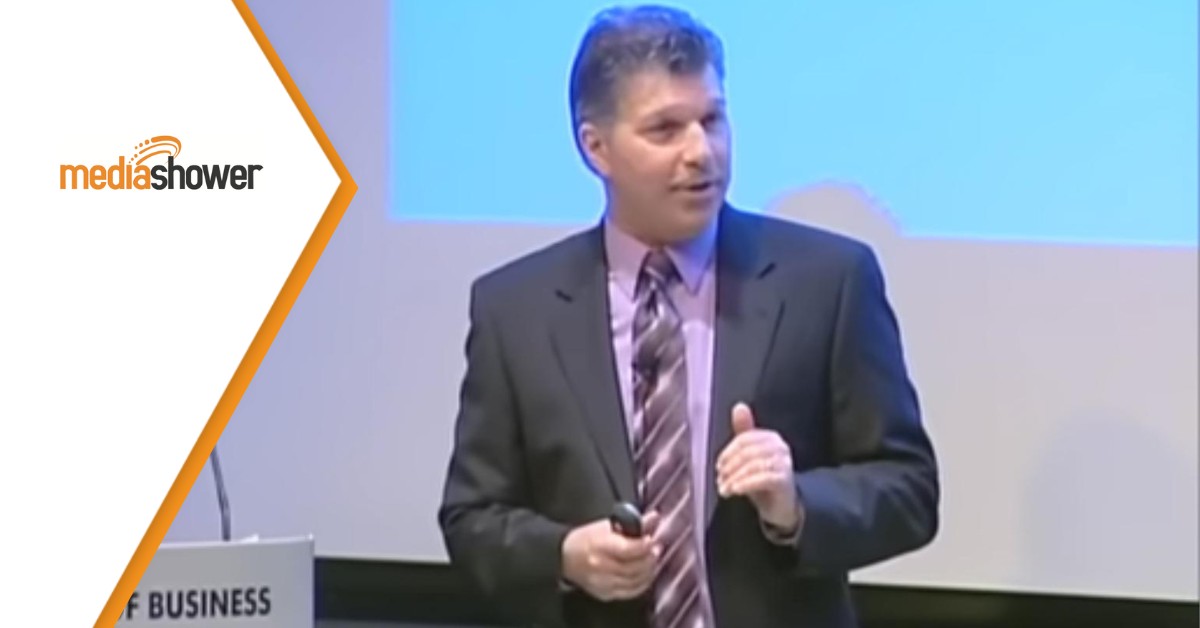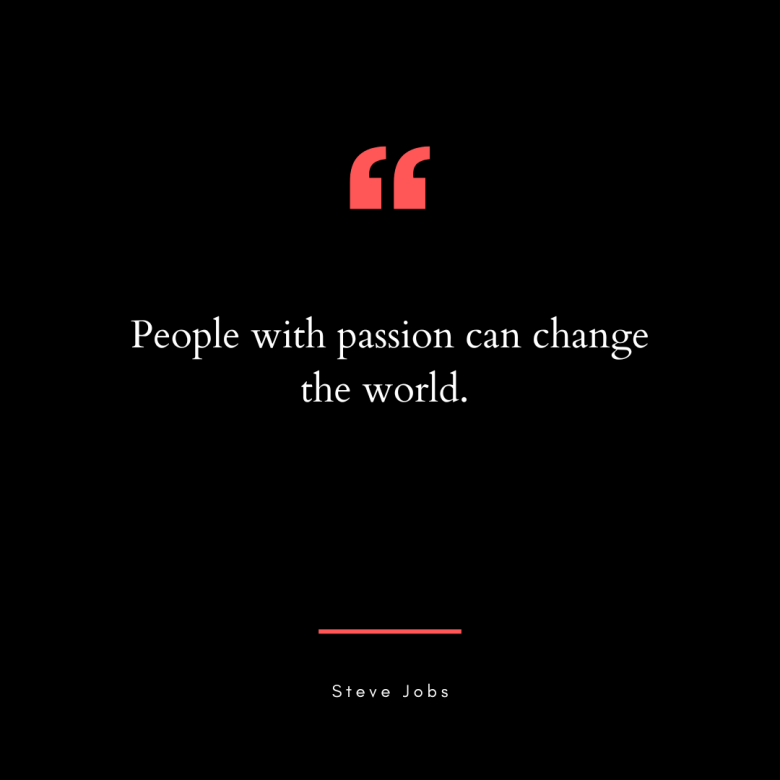
January 9, 2007. At the Moscone Center in San Francisco, Steve Jobs introduces the iPhone, a generational leap in technology, setting a new standard for product presentations. He wins over the audience by focusing on user experience, building anticipation, and crafting a captivating narrative.
Steve Jobs was a master communicator and salesman. His presentations didn’t just captivate the audience, they turned the audience into believers. Many communicators would love to build that kind of emotional connection with their audience.
In his speech at Stanford Graduate School of Business, professional communicator Carmine Gallo unpacks the recipe for Steve Jobs’ success, exploring his methods of building connections and selling ideas.
Here are the key takeaways from Gallo’s speech on how to use the Steve Jobs approach to inspire your audience.
Lead with Passion
“Passion is contagious.”
Genuine passion is the foundation of successful communication. “You cannot inspire unless you’re inspired yourself,” says Gallo.
Communicators like Steve Jobs convey their passion for a worthy cause, not only winning over audiences but inspiring them to become advocates of these ideas.
Steve Jobs was well aware of the power of passion. He believed that passionate people could change the world for the better. He made this idea the centerpiece of the ad campaign that marked Apple’s turnaround, transforming it into one of the world’s most valuable brands.

Passion appeals to the heart instead of the brain. It builds emotional connections, not just logical ones.
Carmine Gallo also tells the story of Cranium’s Richard Tait, one of his clients, who was passionate about building self-esteem. Both Tait and Jobs knew how to communicate their passion to others. They both went above and beyond, convincing people to buy their products. They turned their customers into evangelists.
“And I’ve never forgotten that our customers are our sales force. We’ve sold a million games, with no advertising.” – Richard Tait
Great communicators, like Jobs, don’t sell products. They sell ideas in which people can believe.
Show passion for the ideas you present.
Big Picture Before Details
“Your brain craves meaning before details.”
The human brain strives to understand the big picture before analyzing its details. Gallo points out how the brain of early humans processed information with self-preservation as its top priority. Not much has changed since.
At first glance, our brains cannot process much beyond the initial impression. Communicators must, therefore, ensure they make an impactful first impression. Steve Jobs understood that the MacBook Air was the world’s thinnest notebook, rather than a lightweight notebook computer with a 13-inch display and Intel processor. He knew how to engage the minds of his audience.
Steve Jobs’ presentation techniques focused on simple visual storytelling and simple ideas.
“The Beatles. Now on iTunes.” – Apple slogan
Communicators want to convey information. They want to tell you as much as possible about their products, services, and ideas. Yet simplicity trumps information overload every time.
Gallo points out that it takes courage to simplify communication. That’s the reason why few dare to commit to simplicity.
Simplify your communication and make a strong first impression.
Visual is Memorable
“Visual slides help in creating what’s called a holy smokes moment.”
For successful communicators, slides serve as visual aids that complement the message. Visual messages are memorable, especially when endowed with meaning and emotional connections.
According to Gallo, our brains do not pay attention to boring things. To make a message memorable, outstanding communicators use images to create shock, disbelief, or surprise. In a word, they lend an emotional charge to their messages, complementing them with powerful but simple visuals.
When presenting the iPhone, Steve Jobs intentionally misleads his audience into believing he is about to unveil three different products.
“This is one device. And we’re calling it iPhone.” – Steve Jobs
He uses surprise and shock to allow the audience to marvel at the magnitude of the technological leap represented by the iPhone.
In another example of powerful visual storytelling, Jobs pulls a MacBook Air out of a thin envelope, highlighting the thinness of the product while forever burning that image into the minds of the audience.
A picture is worth a thousand words. Communicators like Steve Jobs understood and used the power of visuals.
 Source: changingminds.org
Source: changingminds.org
Seek to create memorable moments in your presentations through visual engagement.
Sell Benefits, Not Features
“People want to know, what’s in it for me?”
Features define products. They do not resonate with people on a personal level, however. Even those who understand the product features and technology must make an effort to translate them into personal benefits.
Communicators who understand how to sell ideas effectively know they must highlight personal benefits instead of dry specifications.
The original iPod had 5GB of storage space. The fact that it allowed you to hold 1,000 songs in your pocket sounded more practical and beneficial.
Do you buy a new computer to boast how many gigabytes of RAM and video memory it has? Or do you buy it to run the best games, applications, and HD video? If you get the latter, you don’t even care about the former.
Carmine Gallo points out that communicators like Steve Jobs always articulate the benefits of their products over the minutiae of specifications.
Focus on your product from the perspective of your audience, and not your own.
Master Stage Presence
“Your body language speaks as loudly as your words.”
According to Gallo, up to 65% of the impression communicators leave on their audiences comes from their body language, gestures, and stage presence.
An open posture, eye contact, and expressive hand gestures engage the audience and amplify the message.
Complex thinkers use hand gestures, says Gallo. And Steve Jobs certainly fit that bill.
He used few words on his slides to prevent them from distracting his audience and disrupting eye contact. He was a master of body language, conveying his passion, excitement, and dedication through a powerful stage presence in presentations.
Keep eye contact, use hand gestures, and convey passion through body language.
Key Takeaways for Marketers
Customers do not care about your company or product, concludes Gallo. They care about the hopes and dreams you inspire in them. Here’s how you can do that, Steve Jobs-style:
- Show passion. Be inspired to inspire others.
- Simplify your message. Make a strong first impression by focusing on the big picture over details.
- Create memorable moments. Use visuals to surprise or shock your audience. The brain latches onto emotionally charged imagery.
- Sell benefits. People are interested in what they stand to benefit, not what your products or organization can do.
- Master stage presence. Steve Jobs’ presentation techniques rely heavily on hand gestures, body language, and open posture. Pay attention to non-verbal communication.
Whether you’re launching a new product, sharing your vision, or communicating with your team, Media Shower’s AI-powered content creation platform can help you deliver with clarity, passion, and impact. Start your journey today with a free trial, and see how we can help you communicate like a pro.